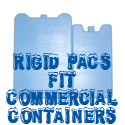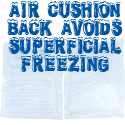A wide range of products need to be transported at low temperatures, including:
• Live, chilled and frozen seafood.
• Fresh produce and dairy products.
• Temperature-sensitive pharmaceuticals.
• Blood and blood products.
• Other biological products.
• Some industrial adhesives.
• Gyroscopes and other scientific instruments.
• Some electronic devices and components.
The ANZ Food Standards Code (2002) and the Australian Cold Chain Guidelines (1999) require the following temperatures for transport:
a) Chilled products should never be handled at temperatures warmer than 5 oC.
b) Frozen products should never be handled at temperatures warmer than –18 oC.
For pharmaceutical products, the following cold chain ranges have been defined in the US Pharmacopeia*.
a) “Controlled room temperature” pharmaceuticals need to be handled at temperatures up to 25 oC.
b) Pharmaceuticals that need to be kept “cool” are to be handled at 8 to 15 oC.
c) Pharmaceuticals that need to be kept “cold” are to be handled at temperatures below 8 oC.
d) Pharmaceuticals that need to be kept “refrigerated” are to be handled at 2 to 8 oC (this is the most common cold chain measure applied in Australia for pharmaceutical products and vaccines).
e) Pharmaceuticals that need to be kept “frozen ” are to be handled at –25 to –10 oC. Although these are not the optimum conditions for all products, these categories are normally used during transportation of perishable foods and pharmaceuticals.
*The official public standards-setting authority for all prescription and over-the-counter medicines, dietary supplements, and other healthcare products manufactured and sold in the United States.









How Gel Ice Works